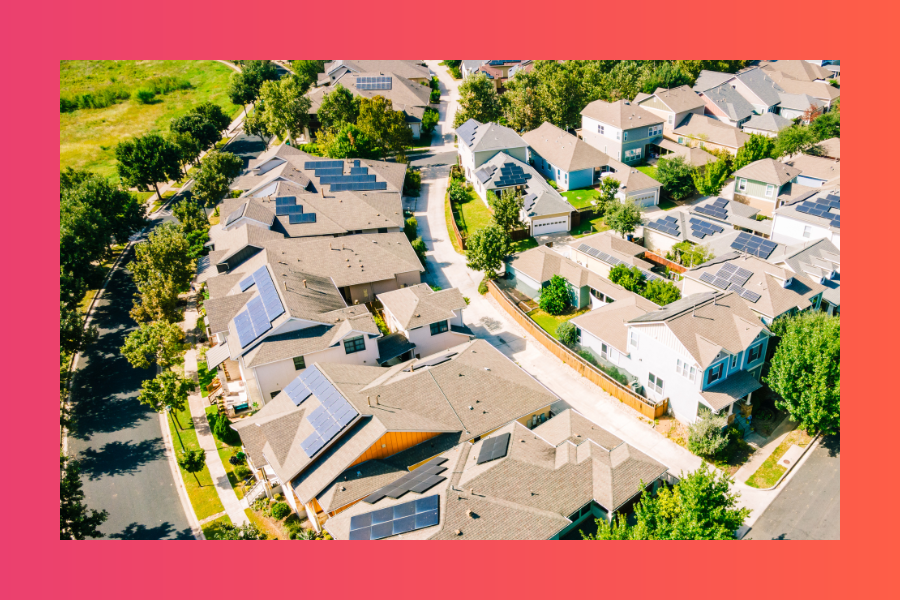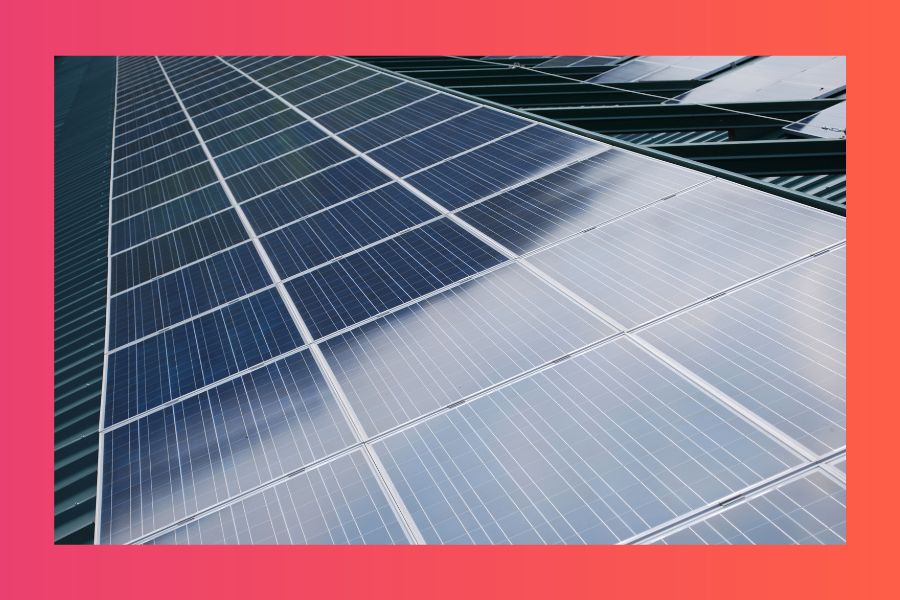The Pros and Cons of Solar Tiles Versus Solar Panels
Introducing solar power to a home is always a very exciting experience. Especially because - while rooftop solar systems are today indeed a common...
7 min read
![]() Solar Trust Centre Team
:
May 9, 2022 8:00:00 AM
Solar Trust Centre Team
:
May 9, 2022 8:00:00 AM

It’s not news that the greater use of solar power provides a path to a better future. One where renewable energy is more affordable for consumers, more profitable for businesses, and not harmful to our planet when in operation. Indeed, there’s a stark contrast between what solar can deliver today, and the outdated and ever-diminishing offerings from the fossil fuel sector. Yet while solar power is undoubtedly outstanding, it’s always worthwhile to reflect on where solar processes can improve further.
The recycling of solar panels (alongside other solar components) is a key example of this. Yes, solar tech is green in its use, but that’s not always the case once a solar system is retired. If it becomes waste, it can be harmful to the environment, as essentially any goods that are not recycled can be. This issue is made more important by the fact lots of solar panels shall be retired in the years ahead. The end-result when solar panels are not recycled 100% - as they’re indeed capable of being - is a loss for solar enthusiasts, conservationists, other stakeholders, and the community at large. But just as properly dealing with solar panel waste has been a real challenge in the years prior, the good news is more recently many positive pieces of progress have been seen. So let’s look now at the state of solar recycling in 2022.
At the outset it’s necessary to note that quality solar panels should indeed last a very long time. The fact many will be retired in the years ahead is not a reflection on their quality, but instead that the ongoing progress of solar technology means many people find after a few years they’d like to upgrade their old system.
Accordingly, many retirements of solar panels occur not because there’s anything wrong with them as such, but just instead because a solar system owner wants to upgrade to a brand new solar system, or the home on which a solar system currently sits is being demolished to make way for a new home, or for another reason that just the same is not directly related to the solar system itself.
While Australia has been a world leader in terms of solar uptake, the reality is the years prior have shown some shortcomings when it comes to solar recycling. The fact is an estimate put forward last year by the ABC holds that by 2035 over 100,000 tonnes worth of solar panels will make their way to landfill. That’s 100,000 tonnes too many given it’s certainly - theoretically, if not right now logistically - possible to see 100% of retired solar panels recycled.
The good news is positive change is well underway. In recent years a number of solar recycling plants have opened in Australia, such as Lotus Energy in Melbourne, and Reclaim PV in Adelaide. Additionally, another entrant in this category, Elecsome, is set to start operating out of Melbourne by 2023. Both Lotus and Reclaim indicate that 100% of the materials they recycle are reused.
Although it’s outstanding that operations like Lotus and Reclaim exist, not all solar recycling businesses globally are guaranteed to recycle 100% of a solar panel. Additionally, in looking beyond Australia, there are countries around the world where recycling operations - not just of solar, but of goods generally - remain very minimal by many measures. Noting this does not seek to critique the many tremendous steps that have also been taken by many countries, but instead just to ensure proper recognition occurs surrounding the fact that much work indeed remains to be done before we see the rapid rate of solar’s uptake globally be matched by similar advances in the recycling sector. For while not every country may hold solar manufacturers, if countries without them allow for the import of solar goods but provide no plan for solar recycling such as Europe requires of their solar manufacturers (more on that in a moment), then the problem of solar waste globally is set to continue growing fast.
In this area, Europe can be seen as an example of the positive policies that can be implemented to help increase solar recycling. In a nutshell, the Waste Electrical and Electronic Equipment Directive (WEEE) requires solar manufactures to facilitate the disposal of solar waste from households. This of course not only encourages European manufacturers to produce solar products that - when the time comes - are easy to recycle, but also makes it easier for consumers to buy and use solar products with confidence, knowing upon such time as they move on from their current system, it’ll be certain their existing solar products will have an easy avenue to make their way to being recycled.
While at first this may seem like a challenging process for solar manufactures to deal with, the existence of PV Cycle affirms there’s an easy route for clearing this hurdle available to solar manufactures. In 2007, the not-for-profit, member-based organisation first arose, and it today offers - in addition to other services in Europe and around the world - a pathway for European solar manufactures to more easily maintain compliance with the WEEE of the European Union.
As the PV Cycle website explains “Companies established in a country of the European Union and selling for the first time….in that country are obliged to organize the collection, the waste treatment and the financing of these activities”, and that “By joining PV CYCLE, we organize all this on their behalf by scaling up the individual responsibility to a collective and agile solution”.
Obviously at present Australia’s solar manufacturing industry is very small. Yet recent times have brought positive news surrounding the prospects of its growth Down Under, with South Australia’s Tindo Solar now set to be joined by RTE Energy, with the latter set to establish a manufacturing facility in Queensland by 2023, with full production slated to begin in 2024. Yet just as such developments are exciting, so too does the experience of Europe with solar production and recycling affirm that the growth of local manufacturing in solar should certainly be cheered, but so too should more robust encouragement of solar recycling solutions occur alongside it (as discussed further in the following section). Indeed, ultimately the growth of solar recycling in Australia is necessary whether or not we have a local manufacturing capacity here - though to be clear, the STC team is certainly pleased we do, and want it to keep growing! - given many solar panels installed here may have been made overseas, but ultimately will need to be dealt with locally once a solar system is retired from use.
As detailed above, it’s a reality that not all solar panels globally are recycled. Ultimately, challenges around recycling certainly aren’t exclusive to solar panels, but given the tremendous contribution that solar power brings to making the world cleaner and greener, understandably there’s an keen interest amongst so many in seeing solar components not only be green in their service, but also once retired. There’s numerous ways in which positive action can be taken today to help address this challenge. This is the case for our readers in Australia, and around the world.
First, for consumers, looking to do business with solar installers who use quality solar panels exclusively. When this is done, a consumer can get a new solar system with the knowledge their installation is essentially guaranteed to last longer than a system which utilises dubious solar components, offered by a questionable solar installer. The longer a system lasts and delivers strong results, the longer it won’t be a candidate for retirement.
Second, there’s the power which solar businesses hold, as everyone of course has a role to play in this area. Reduction of waste in the solar sector is doable, but it requires not only consumers to make smart choices, but for businesses to manufacture and/or offer for sale only quality components exclusively. It’s a reality not everyone in this category is doing the right thing, right now - though it’s of course the case every industry always some bad apples - but the good news is there’s so many brilliant solar businesses out there that are going great and continue to grow their customer base, that certainly there’s no disputing the success on show of business that are doing the right thing in this area; succeeding by providing quality parts and services to consumers who value it.
Third, there’s the role of the wider industry made up of solar researchers and manufacturers, in addition to other stakeholders such as public authorities. It’s no overstatement to say - in addition to the impact it’s already had - solar power is set to be among the most transformative tech trends in this century. More investment in this area - in terms of getting more solar installations up and running now, but also improving the technology that the next generation of solar power will use - is something effectively everyone (beyond a small but loud few who wish to frustrate the progress of green energy for their own interests) has a shared interest in. More research and development that devises avenues to extend the life of solar panels even further will not only help reduce solar waste, but be fantastic for the return on investment it provides over the long term due to more power being generated from longer-lasting solar panels. For government in particular, funding and facilitating the growth of solar recycling centres - as well as recycling generally! - should be a key priority.
A clear-eyed examination of the state of solar recycling in 2022 affirms solid progress has been made in Australia and around the world, but there remains much work to be done. Ultimately, the rapid increase in the use of solar power is set to continue, and this is unquestionably a positive and exciting trend. In turn, there is little doubt in the long term that many more solar recycling operations will come into being, and with them a sharp decrease in the amount of solar waste. Yet even if this problem will resolve in the long term, it’s also the case that strong inroads can - and should! - be made in the short to medium term as well. This so as to ensure once the sun sets on the use of a particular solar system of this current generation, it will indeed certainly find a new life being recycled, instead of potentially creating an eco-headache once retired.
Ultimately, as outlined at the start, the quest to see the 100% recycling of solar panels become a universal standard globally is about ensuring that the solar power industry - which overall is making an immensely beneficial contribution to the world by helping usher in an era of clean and green energy - continues to further improve on its existing processes when it comes to end-of-life policies.
Achieving this 100% target would be immensely beneficial for consumers, businesses, and the wider community as a whole; and the shared benefit is all the more reason for it to be prioritised in Australia and around the world. This is not simply a goal that should ‘self-correct’ its way into existence in the decades ahead with advances in technology that see solar panels last even longer, but is one worth pursuing intently now within this decade. Some may suggest such rapid growth as meeting this 100% target by 2030 would be unachievable, yet the story of solar’s rapid progress over the past decade would illustrate there’s certainly a promising precedent to build upon when it comes to speedy advances in the field.
.jpg)
Introducing solar power to a home is always a very exciting experience. Especially because - while rooftop solar systems are today indeed a common...

Right now Australia is amidst a very contentious debate surrounding energy and the effective operation of the electricity grid. In many respects this...

Buying solar power products is always going to be an exciting event. This is the case whether it’s the first time, or one of many times. When all...